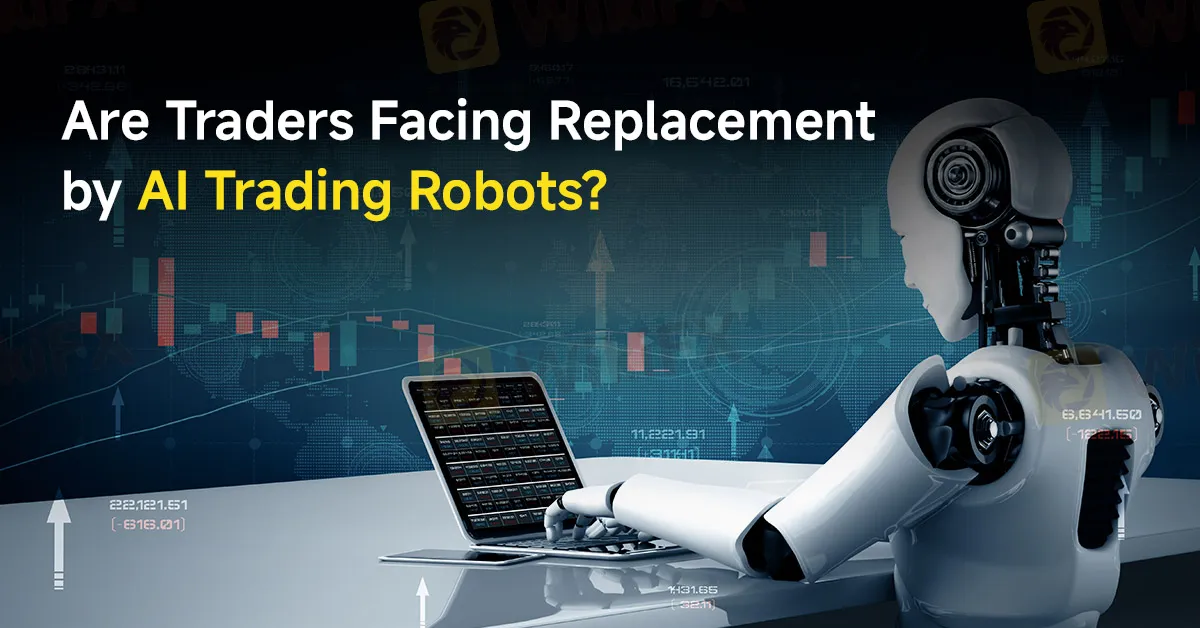简体中文
繁體中文
English
Pусский
日本語
ภาษาไทย
Tiếng Việt
Bahasa Indonesia
Español
हिन्दी
Filippiiniläinen
Français
Deutsch
Português
Türkçe
한국어
العربية
Are Traders Facing Replacement by AI Trading Robots?
Abstract:In the ever-evolving world of finance, the introduction of artificial intelligence (AI) trading robots is making waves, challenging the long-held dominance of human traders. Will human traders be replaced by AI trading robots eventually?

In the ever-evolving world of finance, the introduction of artificial intelligence (AI) trading robots is making waves, challenging the long-held dominance of human traders. According to verified trading records from MyFxBook and third-party validation, a new AI trading robot has generated an impressive $38,000 from a modest $5,000 investment within just one week. This exceptional performance has garnered global attention, prompting a critical examination of the transformative power of AI in trading and whether human traders can keep up.
AI trading robots leverage cutting-edge technology to analyse vast amounts of data, predict market trends, and execute trades with precision. The particular robot in question employs sophisticated algorithms to autonomously navigate the complexities of the financial markets, making split-second decisions that would be challenging for even the most seasoned human traders.
The flexibility offered by AI trading robots is noteworthy. Traders can choose from various trading speeds, ranging from slow and steady to fast and aggressive, allowing for tailored investment strategies. The ability to adapt and optimize trading patterns based on real-time data gives these robots a distinct advantage over their human counterparts.

Given the remarkable returns generated in such a short period, initial scepticism was understandable. The financial community is no stranger to grand claims, and promises of substantial returns often warrant caution. However, the full disclosure and independent verification by MyFxBook, a reputable third-party company known for its trade verification expertise, have quelled doubts. The validated performance of the AI trading robot has persuaded even the most cautious observers of its legitimacy and potential.
The rapid spread of this AI trading technology is undeniable. With 4,000 downloads to date, the robot is reportedly generating millions of dollars in daily profits for its users. Its user-friendly design, which allows for easy installation and immediate profitability, has further fuelled its popularity. Despite its growing acceptance, the future of AI trading robots remains shrouded in uncertainty. Rumours of interest from a large US-based hedge fund in acquiring the algorithm highlight the potential for significant industry shifts.
As AI trading robots continue to prove their efficacy, the question arises: can human traders keep up? The integration of AI in trading does not merely represent a technological advancement; it signifies a fundamental shift in how trading is conducted. The ability of AI to process and react to information at unprecedented speeds poses a challenge to human traders who rely on intuition, experience, and manual analysis.
However, the human element in trading is not entirely dispensable. The strategic thinking, emotional intelligence, and nuanced understanding of market sentiments that human traders bring to the table are aspects that AI, at least for now, cannot replicate fully. The future of trading may well lie in a hybrid model where AI handles data-intensive tasks, while human traders focus on strategic decision-making and oversight.
The advent of AI trading robots marks a revolutionary moment in the financial industry. With their proven ability to outperform traditional methods, these robots are set to redefine the landscape of trading. While human traders face the challenge of adapting to this new reality, their unique skills and insights will remain valuable. The true potential of AI in trading will likely be realized through a synergistic approach, combining the strengths of both machines and humans. As the industry evolves, staying informed and adaptable will be key to navigating this transformative era.

Disclaimer:
The views in this article only represent the author's personal views, and do not constitute investment advice on this platform. This platform does not guarantee the accuracy, completeness and timeliness of the information in the article, and will not be liable for any loss caused by the use of or reliance on the information in the article.
Read more

What Every Trader Must Know in a Turbulent Market
The global financial markets are no strangers to periods of uncertainty, and recent weeks have been a testament to their unpredictable nature. Heightened volatility across major indices, including the US stock market, has left traders reassessing their strategies as they face both opportunities and risks.

SEC Lawsuit Claims Elon Musk Cheated Twitter Shareholders Out of $150 Million
The U.S. Securities and Exchange Commission (SEC) has filed a lawsuit alleging that Elon Musk, the billionaire founder of Tesla and SpaceX, cheated Twitter shareholders out of more than $150 million by delaying the disclosure of his growing stake in the company as he prepared to launch a takeover bid.

NovaTech FX Scams Revealed - Hard to Withdraw Money
NovaTech, a trading platform that has recently gained considerable attention after its sudden collapse. The U.S. Securities and Exchange Commission (SEC) imposed penalties on the platform, its founders, and several major promoters. Here Let's explore this platform by examining its background and the underlying logic of its fraud scheme, and outline some key warning signs that investors should watch for when encountering similar platforms in the future.

Philippine Banks Launch PHPX Stablecoin for Cross-Border Payments
Philippine banks collaborate to launch PHPX, a peso-backed stablecoin, revolutionizing cross-border payments with real-time transfers and financial inclusion goals.
WikiFX Broker
Latest News
Wolf Capital Exposed: The $9.4M Crypto Ponzi Scheme that Lured Thousands with False Promises
Confirmed! US December non-farm payroll exceeded expectations
Spain plans 100% tax for homes bought by non-EU residents
90 Days, Rs.1800 Cr. Saved! MHA Reveals
The Yuan’s Struggle: How China Plans to Protect Its Economy
LiteForex Celebrates Its 20th Anniversary with a $1,000,000 Challenge
Misleading Bond Sales Practices: BMO Capital Markets Fined Again by SEC
Italy’s Largest Bank Intesa Sanpaolo Enters Cryptocurrency Market
What Every Trader Must Know in a Turbulent Market
400 Foreign Nationals Arrested in Crypto Scam Raid in Manila
Currency Calculator






